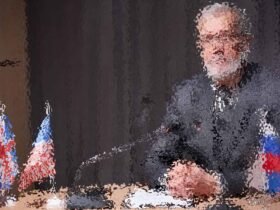This investment manager is looking to bridge the racial wealth gap
158 years ago, black Americans in America achieved personal freedom. Though much harder to achieve, economic freedom.
Using his four decades of investing experience to help close the gap for people of color and the Indigenous population, seasoned portfolio manager Jim Casselberry is working to close that gap.
In a recent interview, Casselberry stated, “We have to do better and we have to do better by getting the capital into the hands of the right people. “What we want to do is be able to assist them. The statistics are painfully familiar by now: Black people make up 13% of the population but own only 4% of the wealth. The wealth of the 400 richest Americans is equivalent to that of the entire Black population. Whites and Blacks currently have a 6 to 1 racial disparity, which is a significant improvement over the 23 to 1 gap that existed in 1870 following emancipation. As of 2019, these data are from the Minneapolis Federal Reserve.
The goal of the organization Known, which Casselberry co-founded in 2021 with a group of Black, Indigenous, Hispanic, and Asian-American co-founders, is to bridge that gap. Its premise is described as “a finance and asset management firm working with founders, family offices, and large asset owners who value competitive returns as well as significant long-term racial, social, and climate impact. ”.
But, according to Casselberry, the objective is clear from the name.
“We even use the term ‘Known,’ particularly within the Black and Brown and Indigenous population, because we want them to feel like they’re known and that they’re seeing we have the abilities to be able to do this,” he said. There are so many opportunities and programs out there. do not work, but they have not necessarily been given the opportunity to do so. ”.
Although he acknowledged that initiatives like affirmative action have aided in progress, he thinks more extensive changes are required.
The statistics are painfully common by this point: Black people make up 13% of the population but own only 4% of the wealth. The wealth of the 400 wealthiest Americans is comparable to that of the entire Black population. The racial disparity today is 6 to 1, which is significantly less than the 23 to 1 ratio in 1870 following emancipation but is still a wide gap. The Minneapolis Federal Reserve provided these data as of 2019.
Casselberry co-founded the organization Known in 2021 with a group of Black, Indigenous, Hispanic, and Asian-American co-founders. One of the organization’s goals is to bridge that gap. According to its description, it is “a finance and asset management firm that works with founders, family offices, and significant asset owners who value competitive returns as well as significant long-term racial, social, and climate impact. ”.
However, the objective, according to Casselberry, is obvious from the name.
When referring to the Black, Brown, and Indigenous population in particular, he said, “we even use the term ‘Known’ because we want them to feel like they’re known and that they’re seeing we have the abilities to be able to do this.”. “There are countless opportunities and programs available. do not work, but they have not necessarily been given the opportunity to do so. ”.
Affirmative action and similar policies have aided in progress, he claimed, but he thinks more extensive changes are required if people of color are to use their talent, opportunities, and skills. ”. observed on Monday in the U.S.
Since two years ago, Juneteenth has been observed as a national holiday. On this day in history, Texas slaves were declared free by Major General Gordon Granger.
The holiday does not herald the end of racial inequality in the U.S., even though it commemorates a terrible wrong that was finally made right.
The distribution of wealth is the best example of this, by far.


















Leave a Reply